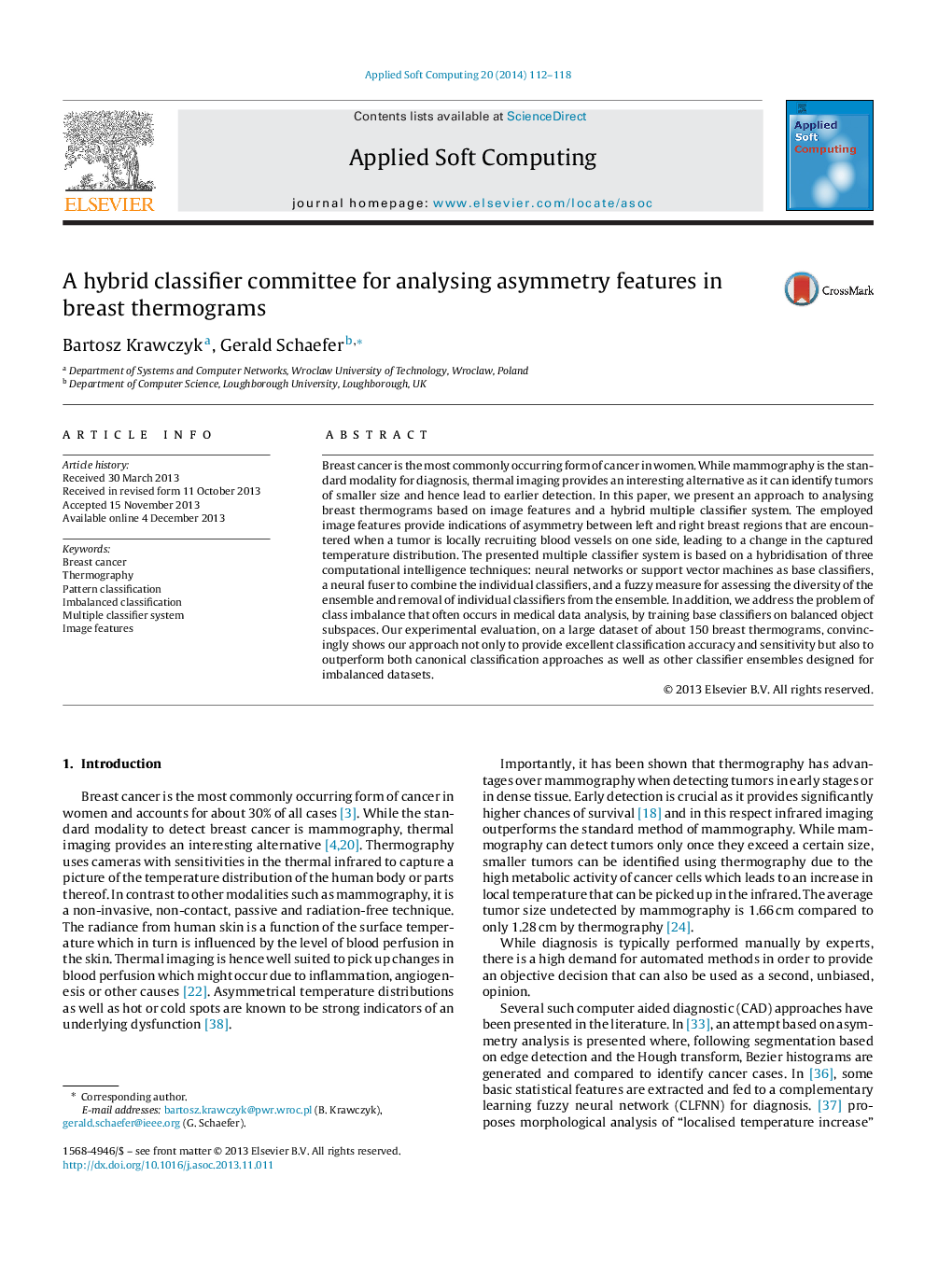| Article ID | Journal | Published Year | Pages | File Type |
|---|---|---|---|---|
| 495326 | Applied Soft Computing | 2014 | 7 Pages |
•An effective approach to analysing breast thermograms for breast cancer diagnosis is presented.•Image features describing bilateral asymmetry are used in a classification stage.•A multiple classifier system based on neural networks/support vector machines as base classifiers, balanced subspaces to address class imbalance, a neural network fuser and a fuzzy diversity measure is presented.•Experimental results show excellent classification performance on a challenging dataset and statistical superiority compared to other ensemble classifiers.
Breast cancer is the most commonly occurring form of cancer in women. While mammography is the standard modality for diagnosis, thermal imaging provides an interesting alternative as it can identify tumors of smaller size and hence lead to earlier detection. In this paper, we present an approach to analysing breast thermograms based on image features and a hybrid multiple classifier system. The employed image features provide indications of asymmetry between left and right breast regions that are encountered when a tumor is locally recruiting blood vessels on one side, leading to a change in the captured temperature distribution. The presented multiple classifier system is based on a hybridisation of three computational intelligence techniques: neural networks or support vector machines as base classifiers, a neural fuser to combine the individual classifiers, and a fuzzy measure for assessing the diversity of the ensemble and removal of individual classifiers from the ensemble. In addition, we address the problem of class imbalance that often occurs in medical data analysis, by training base classifiers on balanced object subspaces. Our experimental evaluation, on a large dataset of about 150 breast thermograms, convincingly shows our approach not only to provide excellent classification accuracy and sensitivity but also to outperform both canonical classification approaches as well as other classifier ensembles designed for imbalanced datasets.
Graphical abstractFigure optionsDownload full-size imageDownload as PowerPoint slide
